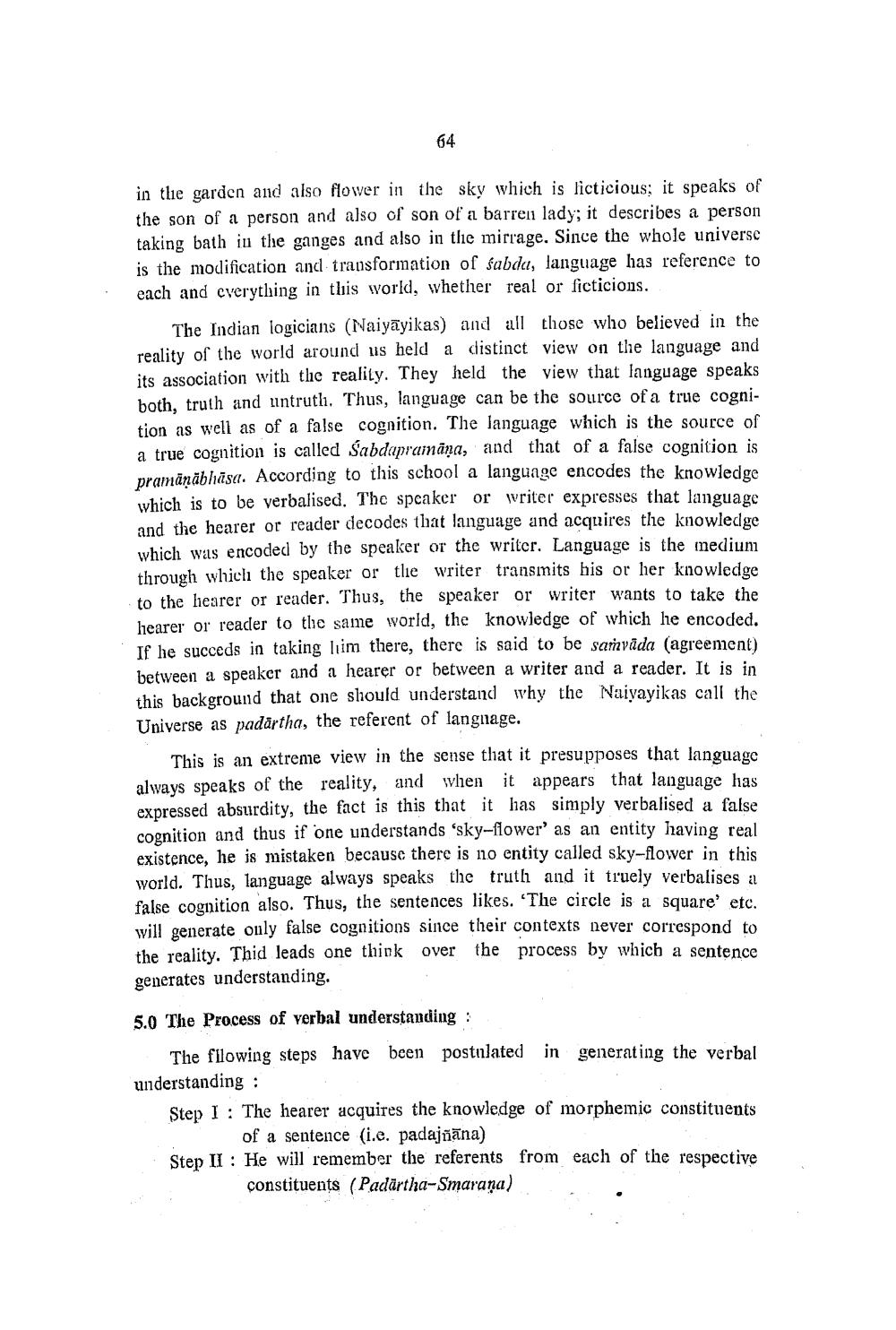________________
64
in the garden and also flower in the sky which is ficticious; it speaks of the son of a person and also of son of a barren lady; it describes a person taking bath in the ganges and also in the mirrage. Since the whole universe is the modification and transformation of sabda, language has reference to each and everything in this world, whether real or ficticions.
The Indian logicians (Naiyayikas) and all those who believed in the reality of the world around us held a distinct view on the language and its association with the reality. They held the view that language speaks both, truth and untruth. Thus, language can be the source of a true cognition as well as of a false cognition. The language which is the source of a true cognition is called Sabdapramāna, and that of a false cognition is pramānābhāsa. According to this school a language encodes the knowledge which is to be verbalised. The speaker or writer expresses that language and the hearer or reader decodes that language and acquires the knowledge which was encoded by the speaker or the writer. Language is the medium through which the speaker or the writer transmits his or her knowledge to the hearer or reader. Thus, the speaker or writer wants to take the hearer or reader to the same world, the knowledge of which he encoded. If he succeds in taking him there, there is said to be samvada (agreement) between a speaker and a hearer or between a writer and a reader. It is in this background that one should understand why the Naiyayikas call the Universe as padartha, the referent of language.
This is an extreme view in the sense that it presupposes that language always speaks of the reality, and when it appears that language has expressed absurdity, the fact is this that it has simply verbalised a false cognition and thus if one understands 'sky-flower' as an entity having real existence, he is mistaken because there is no entity called sky-flower in this world. Thus, language always speaks the truth and it truely verbalises a false cognition also. Thus, the sentences likes. 'The circle is a square' etc. will generate only false cognitions since their contexts never correspond to the reality. Thid leads one think over the process by which a sentence generates understanding.
5.0 The Process of verbal understanding :
The filowing steps have been postulated in generating the verbal understanding:
Step I: The hearer acquires the knowledge of morphemic constituents of a sentence (i.e. padajñāna)
Step II: He will remember the referents from each of the respective constituents (Padartha-Smarana)




